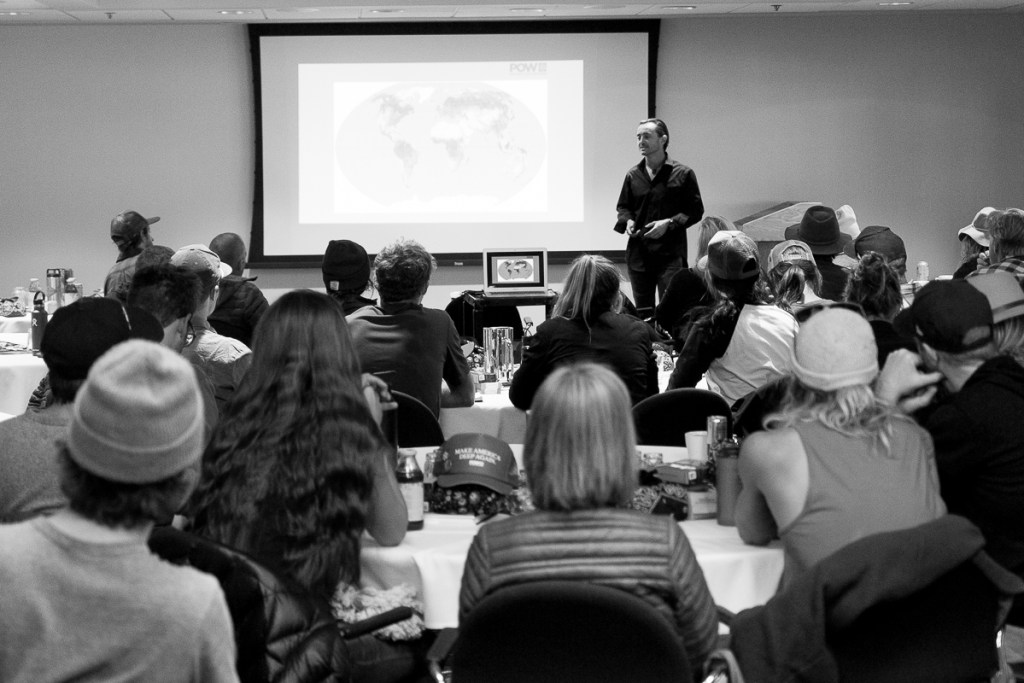Why he thinks the outdoor industry needs a stronger stance on climate change.
Mario Molina lives in the mountains above Boulder, Colorado, in a tiny town called Nederland. He’s a snowboarder, a mountain biker and a climber. He grew up in the highlands of Guatemala, attended school in the U.S. and moved here permanently in 2010 to work as the deputy director for the Alliance for Climate Education. In November, Protect Our Winters (POW), the nonprofit climate change advocacy group founded by pro snowboarder Jeremy Jones in 2007, hired Molina to serve as its new executive director.

Photo Courtesy: Protect Our Winters
We called up Molina soon after he took over the job to find out what his goals are at POW, why he thinks climate change should be the outdoor industry’s next big issue and his vision for what a ski resort of the future could look like.
The U.S. pulled out of the Paris Climate Agreement this past summer. Seems like a tough time to work in climate change.
We don’t expect to see action from the federal government in the near future, but what we are seeing are states, cities, private business and municipalities actually taking a lead, moving to renewable energy and supporting carbon legislation at the state level, like we’re seeing in the state of Washington. Right now, it seems we’re on track to meet the U.S. commitment in Paris, even without federal action. But in the long term, if we really want to address the climate crisis, it’s going to require a proactive national policy.
What were you doing prior to joining Protect Our Winters?
I was the international director for the Climate Reality Project. I looked at strategic implementation for post-Paris engagement by civil society in Europe, Brazil, Mexico, South Africa and the Philippines. I spent a lot of time working with policy wonks and government officials. It was a great learning experience. But I wouldn’t say those people are my crew.
Have you found your tribe now?
As a climber and snowboarder, it’s a great fit, in terms of working within a culture that I feel is my own. Protect Our Winters fills a unique niche within the climate movement in that it can mobilize the outdoor industry, which still needs to take a stronger stance on climate—just like it did with public lands. Ultimately, we are responding to the same threat: Public lands are being opened up to extraction, and a lot of that extraction will be for fossil fuels. Climate projections not only show shorter winters, threatening the ski industry, but also increased drought and fire seasons. Protect Our Winters has consistently made the strong case for the need to build alliances across our outdoor communities and for the urgency of climate as an issue that we as an industry need to care about.

How do you spread that message to an entire industry?
I like to say Protect Our Winters punches above its weight class. Thanks to the caliber of our athletes—like Jeremy Jones, Conrad Anker, Caroline Gleich and others—we have this reach of millions via social media to mobilize people on the ground. The outdoor community in the U.S. has a long legacy of leading on environmental issues, from John Muir to Theodore Roosevelt to Yvon Chouinard. Climate is part of this battle—it’s the greatest threat to all the things we love most about the outdoors. Across the West, we are seeing average temperatures far above normal and less snow. The amount of April snowpack in Colorado has declined by 20 to 60 percent at most monitoring sites in the last 40 years, according to the Environmental Protection Agency. Decreases in winter precipitation not only affect winter sports but the creeks and streams that are fed by melting snowpack in the spring and summer. During years of above-normal downpours, which is the other extreme of climate change, the frequency and intensity of floods come with immense cost in infrastructure and erosion in private and public lands. This community has both the privilege and responsibility of that legacy to make sure our voices are heard.
Some types of outdoor recreation—say, ski resorts or heli-skiing—have a big carbon footprint. How can the outdoor industry justify that while also trying to do its part for climate change?
While we recognize the carbon footprint of our activities, our ultimate goal is not a world where we have to choose between climate stability and recreation. Our ultimate goal is a complete shift of the entire economy so that we don’t have to choose. Twenty years ago, traditional environmental thinking was that you had to drive less or not drive at all to reduce your carbon footprint. Then Tesla came along. Innovations and renewables are driving us toward solutions. It’s not difficult to envision a world where we can drive to 100 percent renewable ski lifts in our electric vehicle and ski on gear made of plant-based polymers. The vision we’re working toward is a full transformation, and that transformation will come from large-scale policy change.
Some people say climate change is a far-away problem. But is it a here and now problem too?
We are already seeing the impacts of climate change on public lands, with large-scale fires that have higher intensity and frequency than ever before. There is a direct relationship between higher average temperatures and increased wildfire frequency and intensity. In the Western U.S. fire season is already three months longer on average than it was in the 1970s and those fires burn approximately 30 percent more acreage. What we’re starting to see fits the climate prediction models.
Do you get to go snowboarding with Jeremy Jones and call it work?
We haven’t ridden together yet, but we plan to. We’ve agreed that those will be the real board meetings.
Editor’s Note: Protect Our Winters is one of REI’s nonprofit partners.


